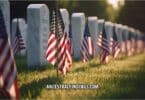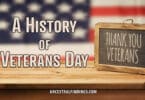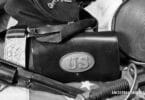Most of us will use military records in our genealogy research at some point. There is almost always an ancestor somewhere on the family tree who served in the military and/or fought in a war. It may be someone you knew personally or an ancestor you never met, but go back far enough on your tree and you will inevitably encounter someone with military service. And, that service generated records. This is good news for you as a genealogist.
While there are many different types of military records you can research, each with the potential to contain its own unique kind of information on the soldier and his or her family, muster rolls are something that is sometimes overlooked. This is because many genealogists think they are just lists of soldiers who were officially signed up for a particular war for a particular period of time. They do not know the genealogical value of muster rolls. You can find out much more about your ancestors from them than you may think. Therefore, they should be part of any military record search you do on an ancestor who served.
Here is how to use muster rolls to your best advantage in genealogy research.
It is important to know what to expect (and to not expect) from muster rolls going in, so you will not be disappointed by what you find there. Muster rolls do not contain anything like what we would consider traditional genealogical information, such as birth, death, and marriage dates, or the names of spouses, children, or other family members. This, however, does not mean these records are not useful to genealogical research.
There is an exception to this rule about muster rolls, and that is the Civil War Muster and Descriptive Roll, which gave the name, birthplace, age, occupation, physical description, and enlistment information of each soldier, but no other pre-WWI muster rolls in the United States are known to contain this type of information.
So, you know what you will not find in muster rolls. However, what you will find there is a much more detailed understanding of your ancestor’s military service. This is important to genealogical research, as it rounds out your ancestor’s personal history, and helps bring them to life for you as a real person once more. The more personal details you know about your ancestors, the better you get to know them as people, even centuries apart from them.
Muster rolls tell us what unit an ancestor served in, and during what time period. You will also learn what duties he or she may have performed, as well as special details about that ancestor’s service. You may even find things like information on injuries received during service, the date, and place of enlistment, and the last date that ancestor was paid for their military service. All of these things are useful and important genealogical details that tell you more about that ancestor’s life in general. They round out the story.
In addition to these details, you will also find the names of other soldiers with whom your ancestor served. This is also important information for a genealogist because those names can reveal relationships that may have been previously unknown. Pre-WWI, it was common for family members and friends to serve together in the same regiment or unit. By looking at the names of the other soldiers with whom your ancestor served, you may be getting a roundabout look at who that ancestor’s relatives and associates back home were… information that may not be available in other records. If nothing else, those names at least give you new avenues to explore for more details on your ancestor.
Muster rolls were taken in low level military units like companies and batteries, usually every two weeks or every month. How often a muster was taken depends on the war and what the unit was doing at the time. Sometimes, circumstances like a battle, epidemics, and lack of access to writing materials and post office services delayed the muster. Musters were also taken at special times, like the formation of the unit, the disbanding of the unit, and when the unit merged with another unit. While muster rolls were taken in both the Army and the Navy, they may also be referred to as Crew Lists with the Navy, but are the same thing as muster rolls.
When a muster was taken, all of the soldiers who were present stood together and responded when their name was called. When they responded, their physical presence would be noted on a list. That list was the muster roll. Occasionally, a soldier who was not physically present would be listed on the muster, usually because they were temporarily working elsewhere, or because they had been recently killed or wounded in action, and the person taking the muster wanted to make note of it. It was not the norm, however. Usually, only soldiers physically present at the time of the muster were listed on the muster roll.
Muster rolls are held at the National Archives in Washington, D.C., and you can search for them there. You can also find them on some online genealogy websites, such as Ancestry.com and Fold3.com, and sometimes on FamilySearch.org. They can be part of a soldier’s compiled service record. Most compiled service records contain several muster roll cards, as the soldier was usually present for more than one muster. The person extracting the information from a muster roll included all of the recorded information about a soldier on the muster on a card and included the card in the compiled service record.
By researching muster roll records, you can find out interesting details about your ancestor’s military service, as well as information about that period in their life. If the person taking the muster was creative or especially detail-oriented, you might find some hidden gems of information on your ancestor, as well. This information makes muster rolls well worth using in your ancestor hunt.






